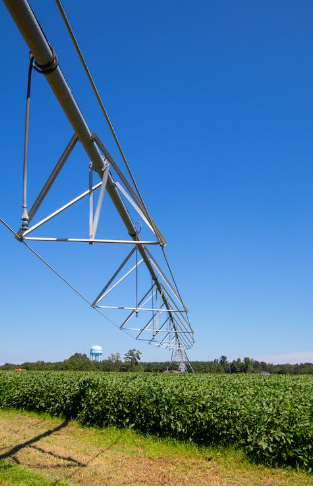Irrigation is an essential part of agricultural production in the United States. With vast areas of arid and semi-arid land, many parts of the country depend on irrigation to grow crops and maintain a stable food supply. While irrigation is critical in many regions of the US, some areas are more dependent on it than others.
One of the most prominent regions in the US where irrigation is essential is the Western United States, especially the arid and semi-arid regions of California, Arizona, New Mexico, Nevada, and Utah. These states have long been reliant on irrigation due to their limited precipitation and high evaporation rates. The Colorado River, which flows through much of the region, is a critical source of water for irrigation, as well as for municipal and industrial use.
California is the largest agricultural producer in the US and the most populous state. With a diverse climate, the state grows a wide variety of crops, including almonds, grapes, citrus fruits, and vegetables. However, much of the state’s agricultural land is in semi-arid and arid regions, which require irrigation. In fact, over 80% of California’s water consumption goes towards agricultural use, with much of it used for irrigation. The Central Valley, which stretches over 450 miles in the center of the state, is one of the most extensive agricultural regions in the world and relies heavily on irrigation.
Arizona, another western state, also depends heavily on irrigation. Much of the state is arid or semi-arid, with hot temperatures and little rainfall. The state’s agriculture is primarily centered around cotton, alfalfa, and citrus crops, which all require significant amounts of water to grow. The Colorado River is the primary source of irrigation water for Arizona, and the state is home to several large irrigation projects, including the Central Arizona Project, which delivers water from the Colorado River to central and southern Arizona.
New Mexico, which borders Arizona, is another state that relies heavily on irrigation. The state’s agriculture is centered around cattle, dairy, and crops like chilies and pecans. The Rio Grande is the primary source of water for irrigation in the state, and several irrigation projects have been developed to ensure a reliable water supply.
Nevada, although known for its casinos and entertainment, is also home to significant agricultural production. Much of the state’s agriculture is centered around alfalfa, hay, and livestock, all of which require irrigation. Water for irrigation in Nevada is primarily sourced from the Colorado River and several local rivers and streams.
Utah, a state known for its national parks and outdoor recreation opportunities, is also home to a thriving agricultural sector. The state’s agriculture is primarily centered around dairy, cattle, and crops like alfalfa and corn. Like many other western states, much of Utah’s agriculture depends on irrigation, and the state has several irrigation projects and systems to ensure a reliable water supply.
In addition to the Western United States, irrigation is also essential in other parts of the country. For example, the Great Plains region, which spans across several states from Texas to the Dakotas, is a significant agricultural region that relies on irrigation. The region is known for its production of wheat, corn, and other grains, which require irrigation to grow in the semi-arid conditions of the region.
